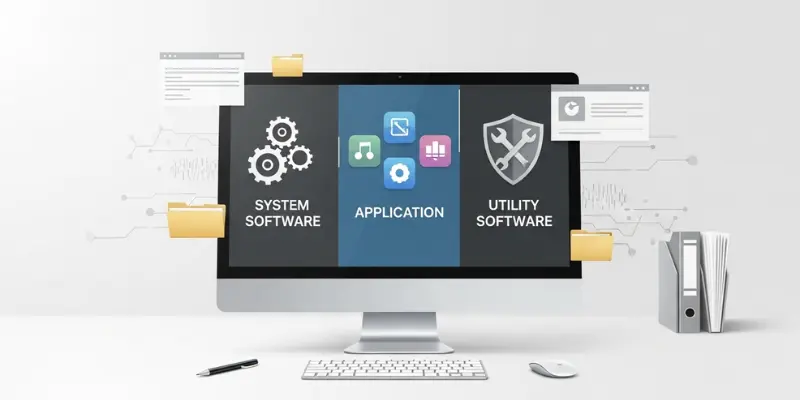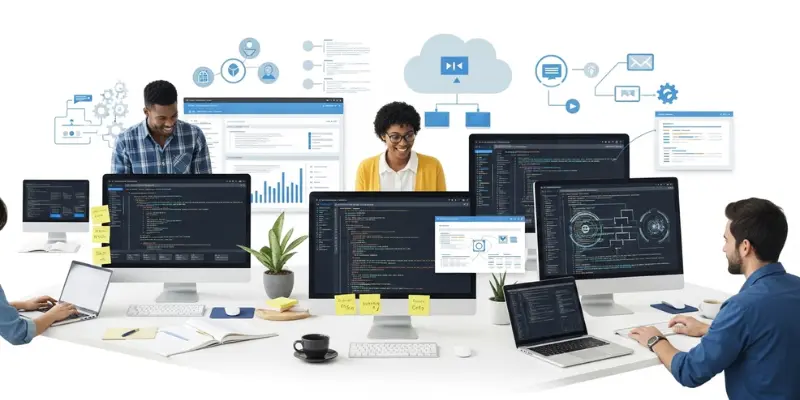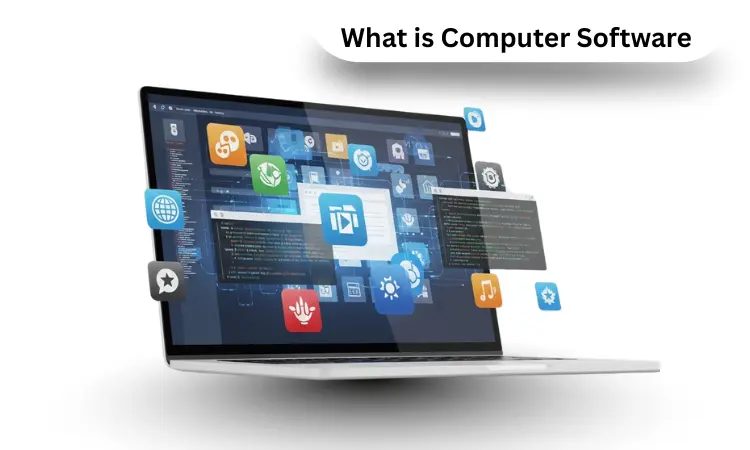Computer software is the invisible part of computer that tells the hardware what to do. Think of it like the brain of a computer. Without software, a computer would just be a box with no purpose. Software includes all the programs and instructions that make computers useful for daily tasks. More information about the types of software, parts of a computer, and types of computers in EC Science with proper details.
Types of Computer Software

1. Operating System
The operating system is the most important software on any computer. It manages all other programs and helps them work together. Windows, macOS, and Linux are popular examples. An operating system controls how the computer starts up and how users interact with it.
2. Application Software
Application software helps people do specific tasks. These programs include word processors, web browsers, and games. People use application software every day to work, learn, and have fun. This type of software is what most users see and interact with regularly.
How Software Works
1. Programming Language
A programming language is a special way to write instructions for computers. Developers use these languages to create software. Python, Java, and C++ are common examples. Each programming language has its own rules and style.
2. Algorithm
An algorithm is a set of steps that solve a problem. Think of it like a recipe for cooking. Software uses algorithms to complete tasks quickly and correctly. Every program contains many algorithms working together.
3. Data Structure
A data structure is a way to organize information inside software. It helps programs find and use data efficiently. Arrays, lists, and trees are examples of data structures. Good data structures make software run faster.
Building and Managing Software

1. Compiler
A compiler changes code written in a programming language into instructions that computers can understand. It reads the entire program and translates it at once. This process helps catch errors before the software runs.
2. Debugger
A debugger is a tool that helps find and fix problems in software. Developers use debuggers to see what happens inside their programs. This tool makes creating reliable software much easier.
3. Software Development Kit
The Software Development Kit provides tools for building programs. It usually includes sample code, libraries, and documentation. Developers use SDK to create software for specific platforms or devices.
Connecting Software Together
1. Application Programming Interface
An Application Programming Interface allows different programs to talk to each other. Think of API as a bridge between two pieces of software. Weather apps use APIs to get forecast data from weather services.
2. Framework
A framework provides a foundation for building software. It includes pre-written code that handles common tasks. Using a framework saves time because developers do not need to start from scratch.
Database Management System
A database management system helps store and organize large amounts of information. Banks, schools, and hospitals use these systems to keep track of records. MySQL and Oracle are popular database management systems that many businesses rely on.
How Users Interact with Software
The user interface is what people see and click on when using software. Buttons, menus, and windows are all parts of the user interface. A good user interface makes software easy and pleasant to use.
Sharing and Protecting Software
1. Version Control System
A version control system tracks changes made to software over time. Git is a popular version control system that many developers use. This tool helps teams work together without losing important work.
2. Open Source
Open source software has code that anyone can see and change. Linux and Firefox are examples of open source programs. Many developers around the world work together to improve open source software.
3. Proprietary Software
Proprietary software has code that companies keep secret. Users must pay to use this type of software. Microsoft Office and Adobe Photoshop are examples of proprietary software.
Software Security
1. Malware
Malware is harmful software that can damage computers or steal information. Viruses, worms, and trojans are types of malware. This dangerous software spreads through email attachments and unsafe websites.
2. Antivirus
Antivirus software protects computers from malware. It scans files and removes threats before they cause harm. Everyone should use antivirus software to keep their devices safe.
Modern Software Trends
1. Cloud Computing
Cloud computing lets people use software and store files on internet servers instead of their own computers. Google Drive and Dropbox use cloud computing. This technology makes it easy to access files from anywhere.
2. Artificial Intelligence
Artificial intelligence is software that can learn and make decisions like humans. Voice assistants and recommendation systems use artificial intelligence. This technology is changing how software works.
3. Machine Learning
Machine learning is a type of artificial intelligence where software learns from data. It gets better at tasks over time without being programmed for every situation. Spam filters and face recognition use machine learning.
Conclusion
Computer software is essential for making technology useful in our daily lives. From the operating system that runs our devices to the applications we use for work and fun, software touches every part of modern life. Understanding how software works helps people make better choices about the technology they use.


